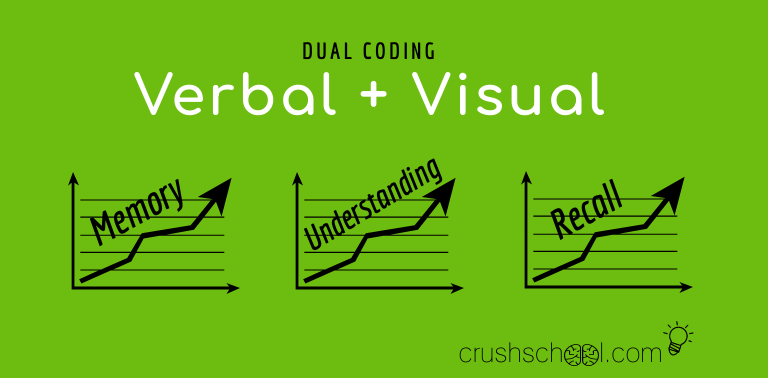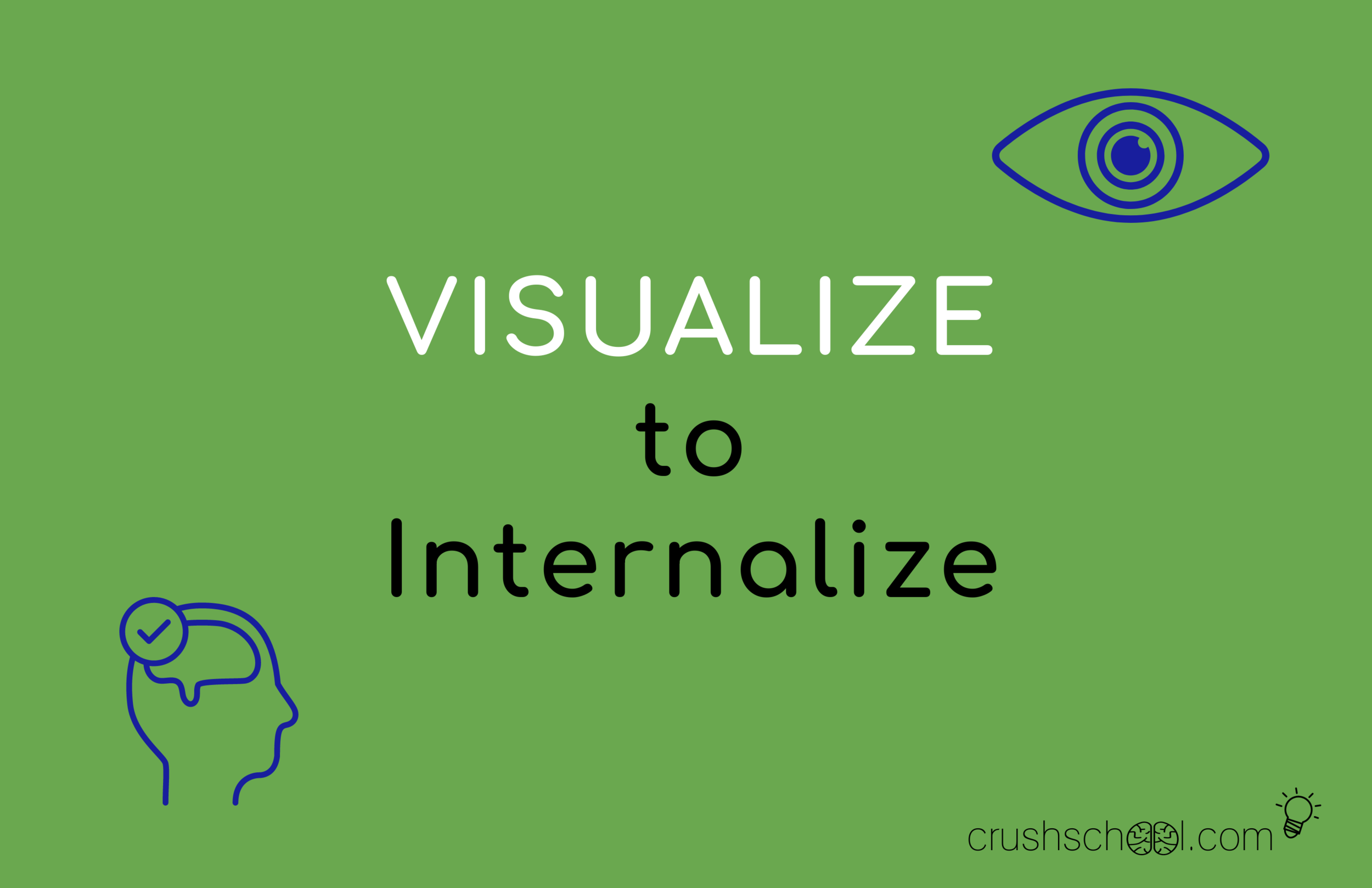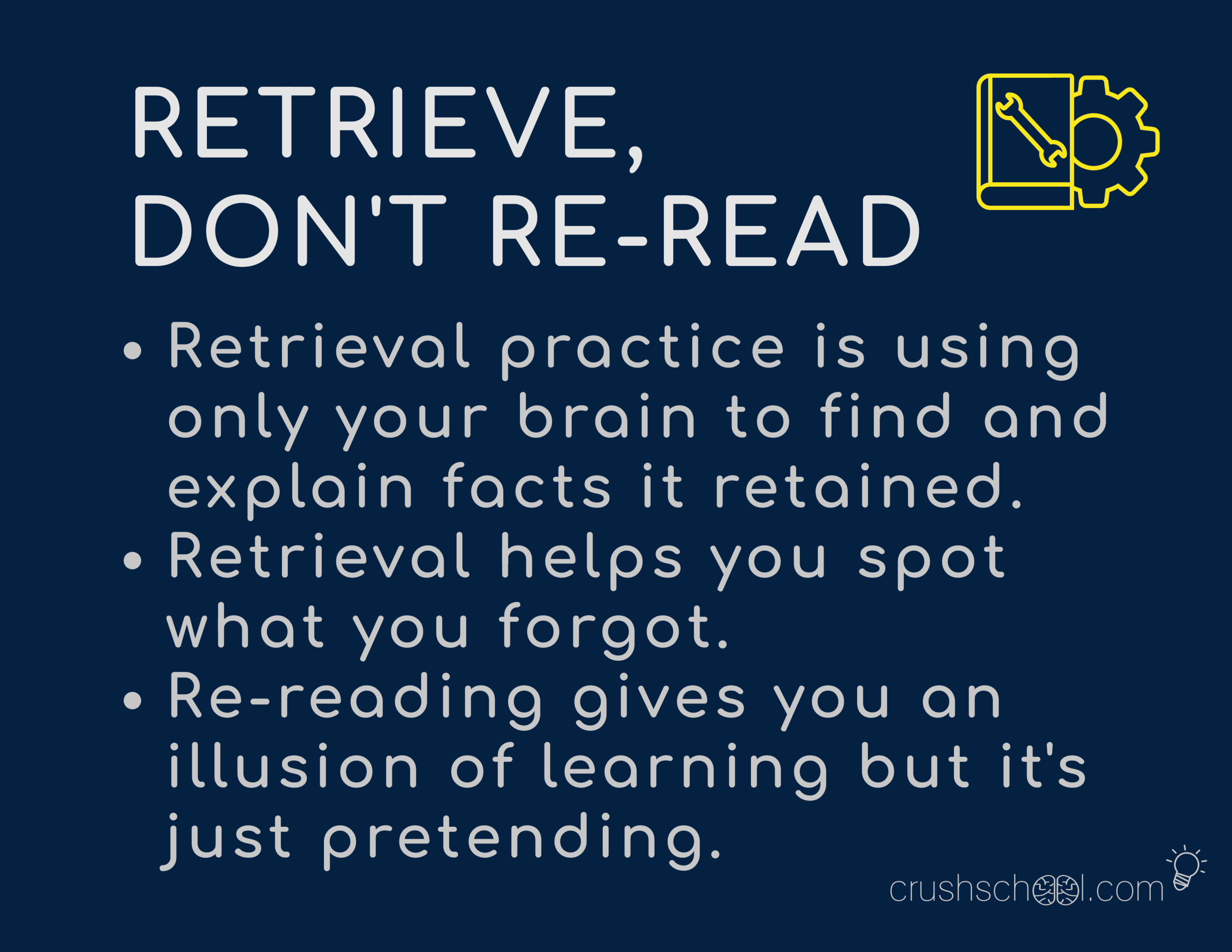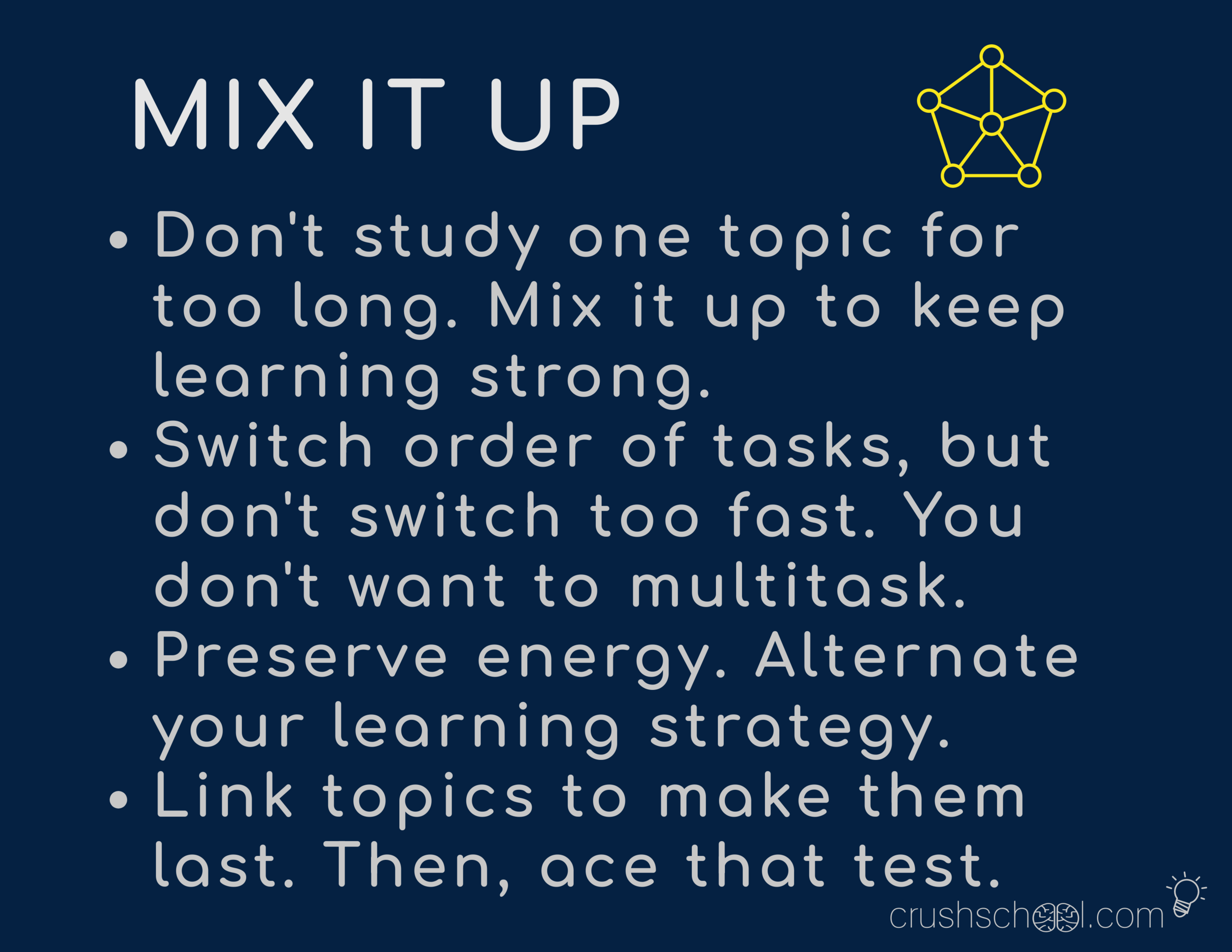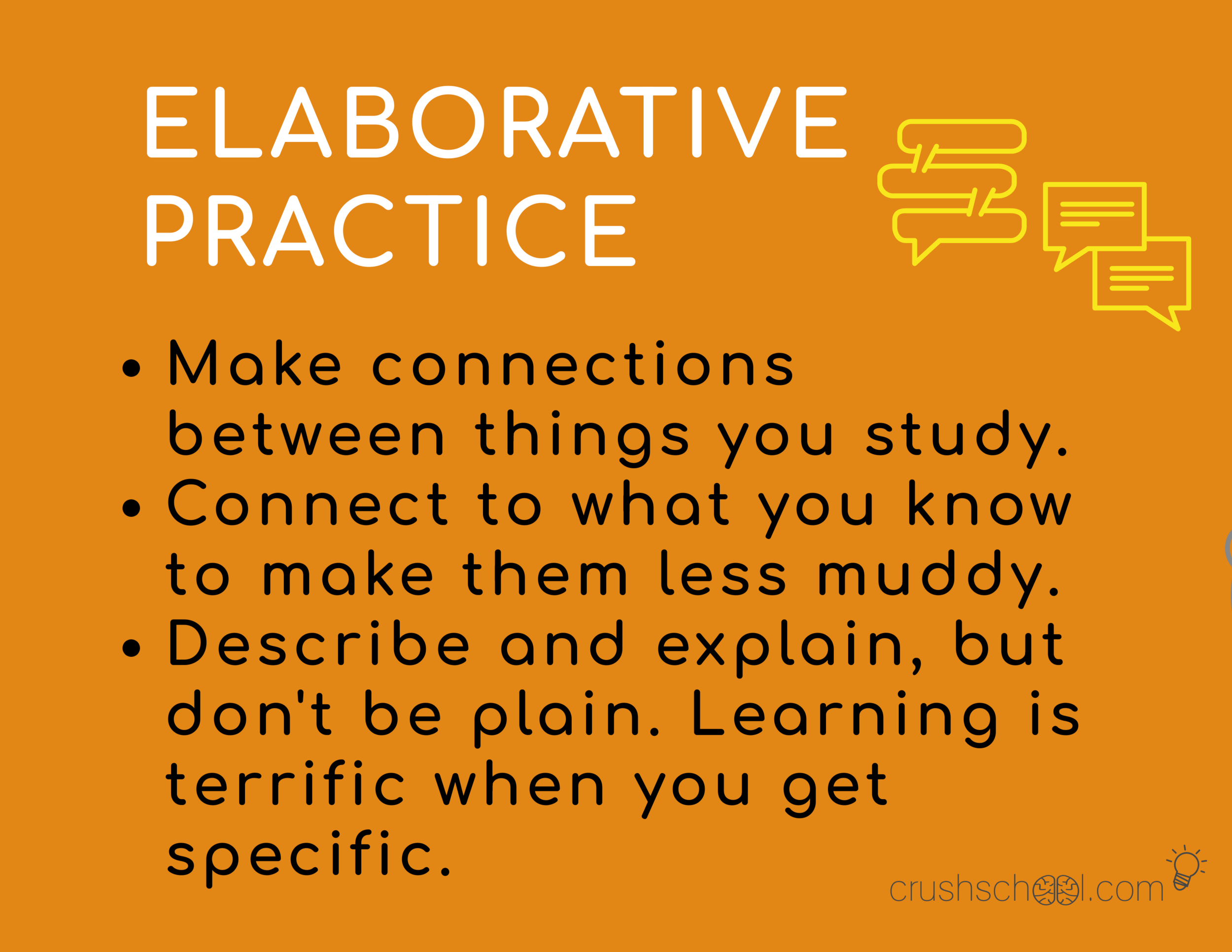Are Your Students Dual Coding? How To Make Combining Verbal With Visual The Usual
Warning! This is my second article in a row that is full of cheesy and rhymy graphics designed to promote nerdy and sciency research-supported learning strategies. Luckily, the strategies described below work and are different than these methods, which also work. As always, read at your own risk of being slightly entertained and, on my good day, enlightened. Thanks for reading!
“Learning how to learn is life’s most important skill.”
In this and my previous article, I condensed research-based effective learning to six strategies: Active Learning, Teaching, Visualizing, Smart Practice, Chunking, and Mistake Making, which be viewed as a set of micro skills - smaller but integral parts of the macro “Effective Learning” skill.
This article covers Visualizing and deliberate use of Dual Coding to help learners of all walks of life, but especially our students, learn how to learn. If you’d like to read about Active Learning, Smart Practice, and Teaching to Learn click here.
The strategies are universal — they can be used in any subject, field of knowledge, or profession to learn anything. They should be used if the learner is planning to actually learn and not just do the thing where he just crams and passes the test.
And if the teacher wants her students to actually learn and not cram and forget? She must teach them how to learn and apply, use these practices in her classroom, and show them how to learn when on their own. Knowledge is only power if they can apply it and they can’t apply that which they do not have. Let’s show them why dual coding works and how to use it to make sure they have so they can apply.
“We do not see with our eyes. We see with our brains.”
John Medina, the developmental molecular biologist and author of Brain Rules: 12 Principles for Surviving and Thriving at Work, Home, and School suggests that vision trumps all other senses, because throughout human evolution it has been the most dominant sense that relies on about half of our brain’s resources.
And let’s not start talking about that icky, long-debunked learning styles theory, because it’s a bunch of road apples. Every human being has their own learning style that uses all of the senses to learn. But vision’s the shiz.
Making Information Visual
Some civilizations have used written symbols to convey what anthropologists consider coherent information for four to five thousand years, but most cultures have only known writing for a few centuries. Our species has been around for two hundred thousand years and for almost the entirety of that time we were not learning through reading and writing.
We used our senses, and because we can see farther than we can hear, or feel, or taste, or smell (thankfully) our vision was the sense that served us best. Along with the other senses, we predominantly used vision to find food so we could feed, to spot predators so we could fight or flee, and to evaluate members of the opposite sex so we could f… breed.
Vision had time to evolve through many millennia. The brain systems that help with decoding text, while promising, are still developing and long-term storage of verbal information is hard. Perhaps the case for using more imagery in learning is best made with the picture superiority effect (PSE), a well-researched phenomenon that shows we remember and retrieve information presented in pictures better than verbal (written and spoken) knowledge.
But doing it is not be as simple as it sounds. Telling students to imagine a concept will not be enough for some, because their spatial capacity — the ability to make, manipulate, and modify visual images in their mind — might not be well developed as a result of its previous underuse. Anyone can close their eyes and conjure a tree, but take a highly abstract concept such as the atom and most students will revert to the age-old, crude, and full of misconceptions “solar system” model. And then chemistry teachers, myself included, wonder: Why oh why do they miss so many easy atom questions on the test?
All kids start out curious. We see this in babies when they gaze in amazement at new faces and objects. Where does this curiosity go and why do some students dread high school science classes and often mask anxiety with indifference? We could blame traditional schooling, but do we truly know? It’s not that simple nor does it do us any good to dwell while teaching. The best course is to show them how to reawaken their imagination.
Imagination awakened — that’s a powerful learning tool. While not in the job description, it is the teacher’s job is to help students use their imagination in the context in which it’s often underutilized — the classroom. The more abstract the concept we teach is, the more important it becomes to create visual reference points, mental imagery that makes it more concrete. At first, we can provide visuals and model how to generate them to our students.
For example… The atom is the simplest building block of matter and one of the most abstract and difficult concepts to correctly understand for students, because it’s unlike anything they’ve ever seen. It’s very small, yet the electrons are very far away from the nucleus — relatively speaking… The nucleus is where pretty much all of the atom’s mass is in the form of protons and neutrons, but it is the smallest part of the atom — relatively speaking… The electrons weigh close to nothing but make up the largest region of the atom we call the electron cloud as the electrons create a sort of an “after image” when they revolve really fast (some calculations have it close to 5,000,000 miles per hour) around the nucleus in the so-called orbitals, which aren’t even paths electrons follow, but rather probabilities of where they can be. Moreover — due to the fact that the electrons are about two thousand times smaller than the protons or neutrons, and they are spaced out, and they are sparse — the electron cloud and the atom itself is comprised of mostly… empty space.
If you don’t teach chemistry, are not a science nerd, or always thought of an atoms as a bunch of balls revolving around a cluster of balls in the middle like planets around the sun, it’s perfectly normal if you’ve developed a migraine reading the above. Scientists don’t completely understand what the atom looks like themselves, and if they tell you they do, they are lying.
I always draw a (very unartistic) football stadium to represent the atom and to aid the student understanding of what it might look like and its scale. I draw the coin the ref flips in the center of the field and ask students to think of it as the nucleus. Then, I draw a few randomly spaced out tiny dots where the stands are and ask my students to imagine they are grains of sand — each ''sitting” in its own seat far away and each representing one electron. Then, I ask them to create this mental image: Remove the stadium, refs, seats, and everything else your mind conjured previously and leave only the coin and the grains of sand suspended in space. Finally, I tell students to animate it: imagine the grains of sand (electrons) revolving around the coin (nucleus) in a three-dimensional space — not like planets around the sun, but rather, the would-be-paths can be horizontal or vertical or skewed in any direction around the nucleus.
The point is to help my students to start seeing things with their mind not just eyes - to use their imagination to draw mental representations of concepts - and to do it often. Ideally, students will learn to create mental images for everything verbal they learn so it is stored in two different but connected parts of the brain, which will then aid recall and understanding. While such practice of converting verbal into visual is natural for some people, other learners must be shown how to do it and given frequent opportunities to better develop their visual-spatial awareness and abilities through deliberate practice.
Dual Coding
The mental model of the atom I created in my own mind for myself is something I share with my chemistry students to tie the insanely abstract to something more tangible. But there’s more to it…
The Dual Coding Theory (DCT) explains two ways of storing memories in the human brain — verbal (text, speech, hearing) and non-verbal (focusing on images). The benefit of having two separate systems of information encoding is that our mind can hold information related to one concept in two different regions of the brain. During initial processing, neurons in different regions of the brain “fire and wire” together connecting the verbal and the visual representations of the same concept. Through repeated processing, these neural pathways thicken (myelination) leading to more elaborate recall, faster application, and deeper understanding of the concept. It’s like having two different people continually discussing a concept and learning from each other by bringing two different ways of looking at the same thing into their interactions.
Thus, it serves our students well to learn to effectively visualize written or spoken information — it might not be easy, but is always possible. Visualization is a skill that must be practiced, because images enhance recall of verbal material. When a concept elicits an image, it has a higher chance of being retained in our memory and can be recalled more easily.
It does not matter if the images are created through deliberate action and not conjured automatically by the brain — they are just as effective, because the learner’s brain forms two distinct neural memory and processing pathways for the information. But because many students do not spontaneously generate mental images to support their learning, teachers should include plenty of visuals when teaching. Additionally, teachers can provide image-generation practice by creating classroom activities that call on students to physically draw or digitally create pictorial representations of the concepts they are learning.
The point is… students don’t have to be Leo-flippin’-Da-Vinci to take full advantage of dual coding. We can help them develop the ability to visualize so they can internalize. Seeing with their brains not just eyes will help them be more wise. Learning how to learn best will help them capitalize on many opportunities and win the ultimate prize - a meaningful life.
Dual Coding: Combing Verbal With Visual Key Takeaways:
Visual learning is more potent as evidenced by picture superiority effect (PSE) but is at the same time underutilized in many classrooms.
Information retention, understanding, and recall is increased when it’s dual-coded.
Ability to visualize isn’t always automatic but it is a skill that can be developed with practice.
References:
Medina, John. Brain Rules: 12 Principles for Surviving and Thriving at Work, Home, and School. Pear Press; Second edition (April 22, 2014).
If you enjoyed this post or found it helpful consider signing up for my newsletter below.
Hi! I'm Oskar.
I teach, write, and create to make teaching easier and learning simpler.
BOOKS
- September 2025 1
- August 2025 5
- July 2025 4
- June 2025 2
- August 2024 2
- July 2024 2
- June 2024 1
- October 2023 1
- September 2023 3
- August 2023 6
- July 2023 6
- July 2022 2
- June 2022 1
- November 2020 3
- October 2020 3
- April 2020 1
- March 2020 5
- July 2019 1
- June 2019 1
- April 2019 1
- January 2019 1
- November 2018 3
- October 2018 2
- September 2018 1
- August 2018 8
- July 2018 11
- June 2018 4
- May 2018 5
- April 2018 2
- March 2018 4
- February 2018 5
- January 2018 3
- December 2017 1
- November 2017 5
- October 2017 7
- September 2017 6
- August 2017 5
- July 2017 3
- June 2017 10
- May 2017 7
- April 2017 7
- March 2017 15
- February 2017 12
- January 2017 13
- December 2016 15
- November 2016 8
- October 2016 7
- September 2016 12
- August 2016 14
- July 2016 10
- June 2016 13
- May 2016 10
- April 2016 8
- March 2016 5
- February 2016 7
- January 2016 6
- December 2015 5
- November 2015 8
- October 2015 2

